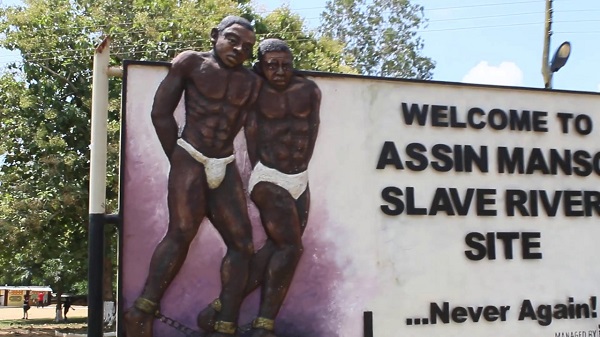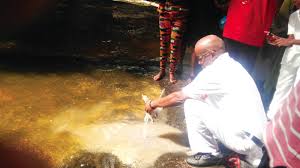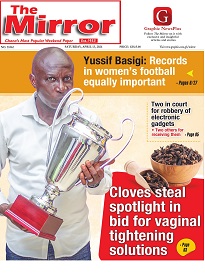The Mirror's Health , Lifestyle and Fashion

Bentsifi's Tattle : The 'Akofo Sunsum' tour
Not very many, but in a few hours, there'll be a road block. It’s like that here every August 1, since 1998. That was when the annual observance of Emancipation Day was introduced in Ghana.
Advertisement
The day marks the abolition of slavery in the British Colonies in 1834. And, you know, Ghana is the first African nation to adapt and adopt to commemorate that resistance and liberation of the struggle of the African people in the Diaspora against enslavement and the violation of their human rights, which this day represents.
The flow of cars is very sporadic, considering where we are is a location 40 kilometres along the Cape Coast - Kumasi highway, at Assin Manso, that town in the Central Region well known for the role it played as a slave market during the time when natives were captured and sold off to wealthy merchants.
Today, it doesn't feel quite like a place that was once a nerve centre of the trade in the captured natives. These people, brought in from further north, from the Salaga Slave Market, were sold here to the merchants from the coast who lived in the fortified European buildings.
It was from there that they were sent onward, transported on the transAtlantic route into slavery.
Today, they are merely stories, but I am standing here imagining how things looked then. Did it look so obvious that the people brought to the market settlement here were being violated? With no mass media and selfies to take real-time photos to share, how long did it take for the people living in the area of West Africa to get to know how those people, often in shackles and sold off, were being sent away to be in bondage.

The Ndonkonsuo - a river where the captured took their very last bath on the continent of Africa
Slavery was prevalent among the Akan whose culture permitted it. But slaves were not in bondage. Those entrapped as slaves in those days were merely captured to add to a workforce and often became part of the tribe or family. Many even became advisors to the patriarch of the tribe, integrated so well and to this day, are considered kith and kin, losing their roots.
But I doubt that at the time, onlookers felt that the captured could be dealt with like we do property, to use them and not reward them. The only thing the Akan enslaved captives couldn't do was own title to land. Many were given portions of land for farming and dwelling.
What this has led to, including causing disruptions in our chieftaincy and kingmaking traditions, is the subject of another discussion.
Those unfortunately captured and sold off to the white men on the coast were the unfortunate ones who were sent far away from their home. None of these forms of slavery is justified.
And, it is for good reason that after many years in the wilderness of the West, people scattered in the African diaspora are today able to come to Ghana, where many relics that attest to the processes of transporting these captured natives can be found.
What can be found in those who return is their capacity to be able to bear what their forebears have undergone. The resilience of their forebears, who are also ours too, what they have suffered, is worth commemorating. To remind each of us of our respective roles in this struggle and where we are today.
That's why I believe it is important for us all to be part of the conversation and ceremonies that form Emancipation Day. From the lectures and wreaths laying healing actions at the du Bois Centre, to the eve, Friday night for the Reverential events, when we dress in flowing white garments for the Candlelight procession.
This takes place symbolically within the enclaves of the fort at Oguaa (Cape Coast Castle), where we slow march down into the dungeons to reflect before settling at the main courtyard for a night of performances, reverential activities and solidarity statements.
On Emancipation Day itself, we go on a curative excursion to Assin Manso - the final link in the slavery route from northern Ghana, which today, is an attraction, the Ancestral River Park.
There's a cemetery, and the nearby Ndonkonsuo - a river where the captured took their very last bath on the continent of Africa, before being taken south to the coast for onward transport across the Atlantic.
There, we do the curative walk down the "Trail of Tears" - from the Ancestral Park down to Ndonkonsuo, for meditation and supplication.
This year, WangoWango joins Sunseekers Tours to curate a whole new experience as part of the activities. The "Akofo Sunsum" tour, with a Luncheon Conclave for our returned warrior spirits, will be hosted in the ruins of Fort Amsterdam at Abandze.
A symbolic and solemn occasion of supplication and nourishment, it is our way of commemorating the return of the resilient and triumphant spirits of our kin, whose battles continue as they fight to let the world know that "Black Lives Matter"!




